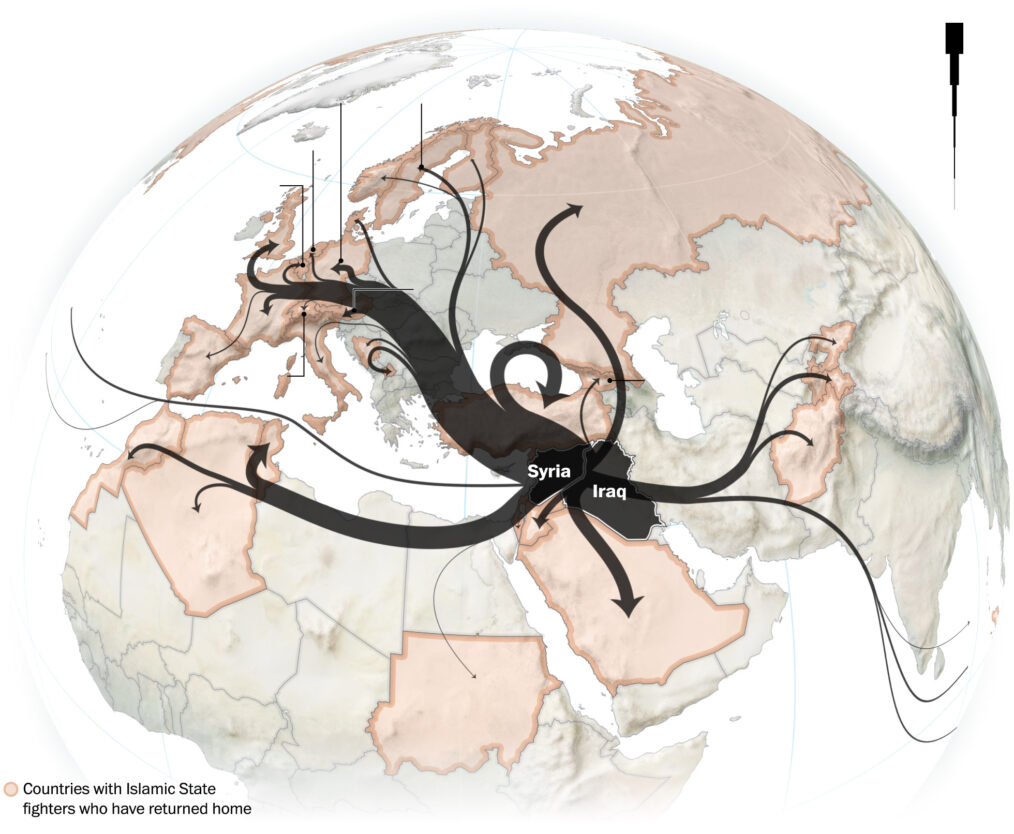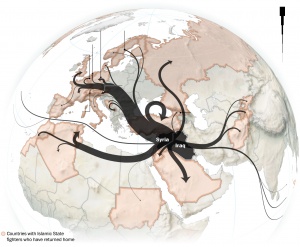
What Becomes of Returning ISIS Fighters?

Graphic from the Washington Post[1]
Since the Islamic State’s collapse in Syria and Iraq, returning jihadists pose a problem to countries that don’t know how to handle the risk they present. While most are imprisoned, some are being rehabilitated. The rehabilitation process is costly and long and it raises questions about how to deal with radicalized individuals and avoid additional radicalization and violence[2].
Solutions for de-radicalizing jihadists and their children are hardly one-size-fits-all. Especially when the people in question were not directly involved in attacks or violence, but could still radicalize others. While most countries have addressed the problem of returnees in their respective criminal justice systems, some critics have been vocal about potential negative ramifications.
In an interview with I.R.I.N. (Integrated Regional Information Networks), the father of a radicalized Kosovan fighter states that steep jail sentences will not help returnees, but rather encourage more people to become radicalized[3]. That may be true. By punishing returnees harshly, states run the risk of giving extremist groups more reasons to feel antagonized and persecuted, which they, in turn, could use in their rhetoric when radicalizing others.
The problem is that there are limited options for such people. While de-radicalization programs exist, they are costly and must be tailored to each individual. The programs work if done properly, but with approximately 5,600 fighters returning home, it is difficult, if not impossible, to accommodate so many at-risk people[4].
That said, mass incarceration does not eliminate the problem in the long run. A radicalized person needs to create a new identity and life purpose that does not revolve around violence. Therefore, a fusion of de-radicalization programs and incarceration might be the most efficient, realistic option for most states.
[1] Meko, Tim. Analysis | Islamic State fighters returning home. (Feb 22,2018.). Retrieved March 6, 2018, from https://www.washingtonpost.com/graphics/2018/world/isis-returning-fighters/
[2] Meko, Tim. Analysis | Islamic State fighters returning home. (Feb 22,2018.). Retrieved March 6, 2018, from https://www.washingtonpost.com/graphics/2018/world/isis-returning-fighters/
[3]Nianias, Helen. Lessons from Kosovo? How a European hotbed of Islamist extremism deals with returning fighters. (2018, March 2). https://www.irinnews.org/feature/2018/03/02/lessons-kosovo-how-european-hotbed-islamist-extremism-deals-returning-fighters
[4] Meko, Tim. Analysis | Islamic State fighters returning home. (Feb 22,2018.). Retrieved March 6, 2018, from https://www.washingtonpost.com/graphics/2018/world/isis-returning-fighters/
